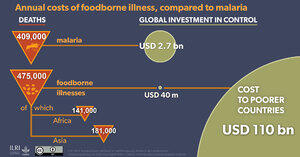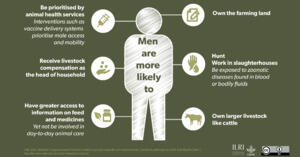
A comparison of malaria prevalence, control and management strategies in irrigated and non-irrigated areas in eastern Kenya
Abstract
Background This study was conducted in Bura irrigation scheme in Tana River County and the pastoral area in Ijara, Garissa County in the eastern Kenya to establish the knowledge, attitude and practices on malaria transmission, control and management, and determine malaria prevalence and the associated risk factors. Methods A cross sectional survey design that involved 493 randomly selected people from 334 households was used between November and December 2013. All the randomly selected people were screened for malaria parasites using rapid diagnostic test (RDT)—Carestart™ malaria HRP2 (pf) kit. A questionnaire was administered to determine potential risk factors and perceptions on malaria exposure within a period of 2 months prior to the survey. Two logistic regression models were fitted to the data; one used the RDT results while the other used data from the questionnaire survey. Results Using RDT, the prevalence of malaria was 4.68 % (95 % CI: 1.48–7.88 %) and 0.31 % (−0.30 to 0.92 %) in irrigated and non-irrigated areas, respectively. From the questionnaires, 14.62 % (9.27–19.97 %) and 23.91 % (19.23–28.60 %) of the participants perceived to have had malaria in the irrigated and pastoral areas, respectively. The main malaria control measure was the use of bed nets: average of three nets per household in Bura irrigation scheme and one in Ijara. Artemether–lumefantrine was the main drug of choice mainly in the irrigated area while sulfadoxine–pyrimethamine was likely to be used in the non-irrigated area. Households located >5 km from the nearest health facility had higher prevalence of Plasmodium infection than those located ≤5 km. Conclusion The residents of Bura irrigation scheme were more likely to be infected compared to those living in the non-irrigated area of Ijara. However, those in the non-irrigated area were more likely to be treated or use over-the-counter medication for perceived malaria illnesses compared to those in the irrigated area. There is a need, therefore, to formulate effective ways of managing malaria especially in irrigated areas and build capacity on differential diagnosis for malaria, especially in the pastoral areas.
Citation
Muriuki, J.M., Kitala, P., Muchemi, G., Njeru, I., Karanja, J. and Bett, B. 2016. A comparison of malaria prevalence, control and management strategies in irrigated and non-irrigated areas in eastern Kenya. Malaria Journal 15: 402.










